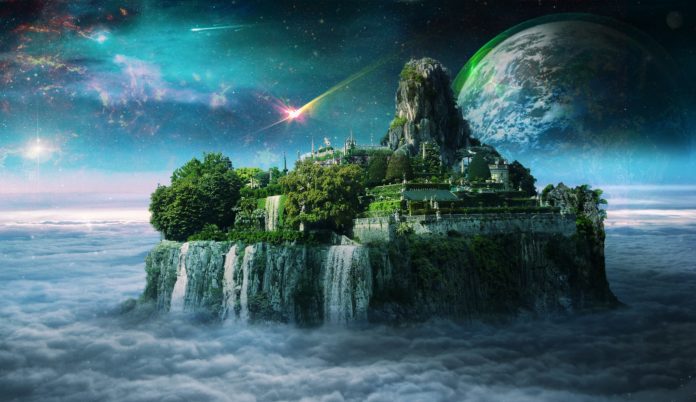Phantom Islands: The Imaginary Lands That Fooled Travellers
Travel has always been a big part of human life. People travel to explore new places, meet different cultures, and learn about the world. For children, travel is even more exciting because it helps them see new things and understand how life is different in other parts of the world.
But what if someone told you about an island that exists on a map but disappears when you try to visit it? Would you believe it? Long ago, explorers believed in such islands, which later turned out to be phantom islands-places that existed only in stories, mistakes, or myths. These islands appeared on maps for many years, but when modern explorers tried to find them, they were nowhere to be seen.
Phantom islands are an interesting part of history. They tell us about how people once explored the world, made mistakes, and corrected them using science. Some phantom islands were created due to optical illusions, floating ice, or map errors, while others were based on legends and myths.
So, what are phantom islands? A phantom island is an island that was once believed to exist but later proved to be a mistake. These islands were included in maps, and many explorers even tried to claim them. Some of these islands had names and stories associated with them, making them seem real. However, as exploration advanced, scientists and sailors discovered that these islands did not exist.
These mysterious islands were removed from maps once their non-existence was confirmed. Some disappeared because they were never real, while others were mistaken for icebergs, clouds, or floating volcanic debris.
Famous Phantom Islands in History
Many phantom islands have appeared in history, fooling explorers and mapmakers. Below mentioned are some of the most fascinating ones:
1. The Island of Saint Brendan
Long ago, Irish monks believed in a magical island called Saint Brendan’s Isle. According to legend, a monk named Saint Brendan, and his followers discovered a paradise-like land in the Atlantic Ocean. Many sailors claimed to have seen it, but whenever explorers went searching, it was nowhere to be found. Scientists now believe that those sailors may have been tricked by mirages or natural cloud formations over the sea.
2. Hy-Brasil: The Vanishing Island
Another legendary island was Hy-Brasil, said to be located west of Ireland. According to myths, it was a rich land, full of treasures and advanced people. Some sailors even reported seeing it appear every seven years, only to vanish again! Today, researchers think that thick fog, storms, or sea reflections may have caused sailors to mistake the ocean’s surface for an island.
3. Sandy Island – The Phantom That Lived Till 2012!
One of the most famous modern phantom islands was Sandy Island, which appeared on maps for over 100 years. It was marked in the Pacific Ocean near Australia. In 2012, scientists aboard a research ship tried to visit the island—only to find nothing but deep ocean water! This was a clear case of a mapmaking error, possibly caused by a floating mass of volcanic debris that was mistaken for land.
4. The Sunken Island of Bermeja
Bermeja Island was included in maps of the Gulf of Mexico for centuries. However, when scientists used satellite technology, they found no sign of it. Some people believe that an earthquake or rising sea levels may have sunk it, while others argue that it was simply a cartographic mistake.
In ancient times, sailors and explorers did not have GPS or satellite maps like we do today. They used compasses, stars, and their own eyes to find their way across the ocean. Because of this, they sometimes made mistakes and believed in islands that did not really exist. There were many reasons why people thought they had found new land.
Sometimes, reflections on the water or mirages made it look like there was land ahead. Other times, sailors may have seen floating icebergs or volcanic ash and thought they were islands. Some explorers were so excited to find new places that they imagined islands where there were none. Also, when an island was put on a map, other mapmakers would copy it without checking if it was real. This led to many fake islands being believed in for years!
Today, with the help of science and technology, we know that phantom islands were mistakes. Scientists have used special tools to map the ocean and correct these errors. Sonar technology helps them study the ocean floor to see what is really there. Satellites take clear pictures of the Earth from space, so we no longer add fake islands to maps. Scientists also study the climate and changes in the Earth’s surface to understand if some islands may have sunk due to rising sea levels or natural disasters. Because of these advancements, maps today are much more accurate.
Even though phantom islands were not real, they were an important part of history. They remind us how curious humans are and how much we love to explore new places. They also teach us that mistakes help us learn. Explorers kept correcting maps over time, making navigation better for future travellers. Even today, there are parts of the ocean we have not fully explored. Who knows what other mysteries might still be out there?
Even though we have mapped almost the entire Earth, the deep oceans still hide many secrets. Some scientists believe there may still be unknown lands underwater. Phantom islands may have been mistakes, but they made history more exciting. They show us that travel, adventure, and science always go together. Whether we are exploring new lands or dreaming about space travel, there is always something new to discover!
By: Yesha Upadhyay
Write and Win: Participate in Creative writing Contest & International Essay Contest and win fabulous prizes.














